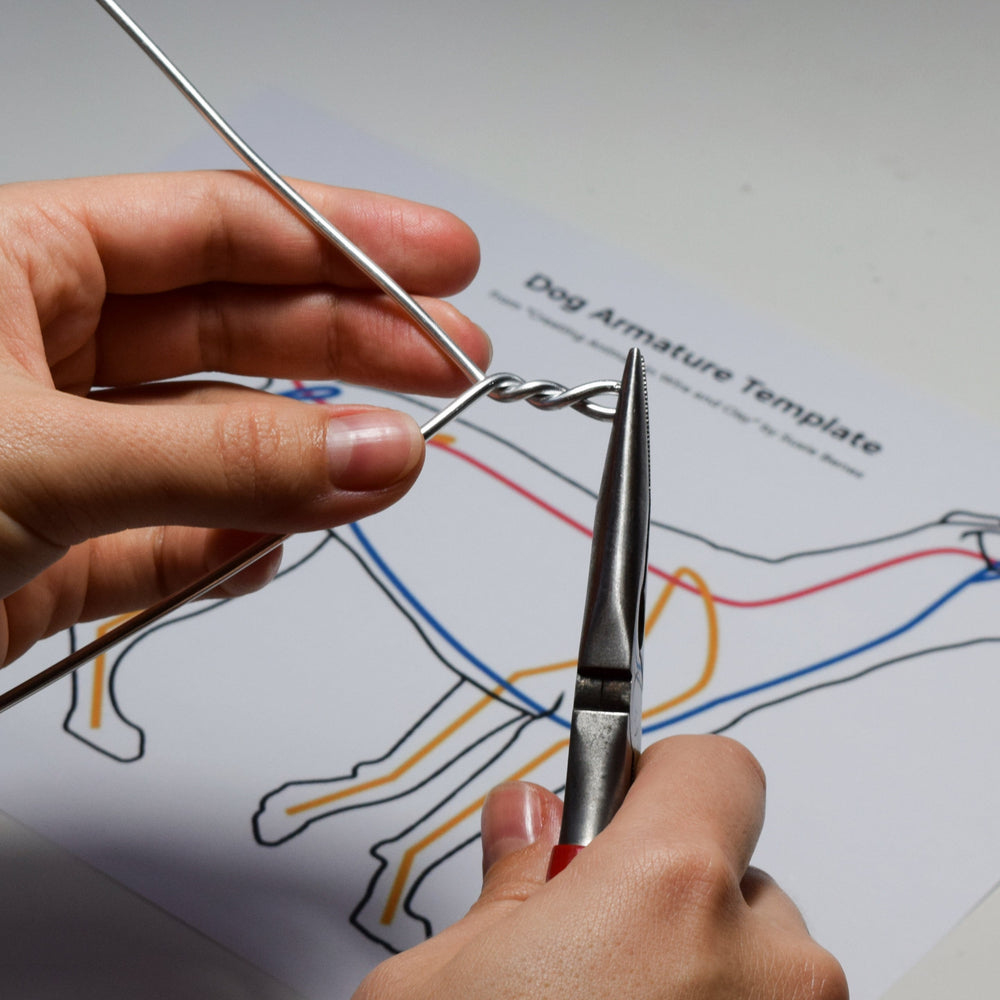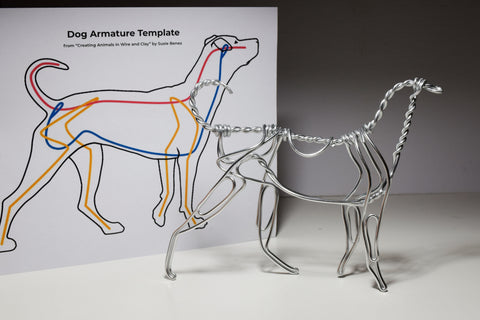
Disclosure: This post contains some affiliate links. I may earn a small commission at no extra cost to you, supporting my blog and content creation. Thank you!
---
If you've been following my blog, you know that I've previously discussed the importance of armatures in air dry clay sculptures. An armature is the inner support system of a sculpture, essential for creating both strong and delicate forms. Wire is one of the most common materials used for armatures, and in this post, we'll explore different types of wires and their unique properties to help you find the perfect fit for your sculpture.

What in Good Gauges? Wire Thickness Explained
When you first start looking at wire it can be overwhelming, with various metals, measurement systems, and quality levels to choose from. Let's look at the biggest one first: how wire is measured.
In North America, wire thickness is typically measured in gauges (or AWG), with higher gauges indicating thinner wire. Wire thickness may also be represented as a fraction. In Europe, wire thickness is generally measured in millimetres.
When selecting a wire gauge, remember that its primary purpose is to provide structural support for the sculpture. Consider the amount of clay used and whether the wire can effectively support it.
I use various wire thicknesses for different applications and sculpture sizes. For example, the sculpture below was created using 12-gauge wire.

Demystifying the Wacky World of Wire
Now that we understand how wire is measured, let's break down the most common metal wires you'll encounter when sculpting with air dry clay.With regards on where to buy wire, I exclusively purchase mine online to secure the best prices. I find that most art stores sell too small a quantity for too big a price tag.
Aluminum
Aluminum armature wire is ideal for sculpting, as it's both easy to shape and remains solid. Be cautious when purchasing "aluminum wire" from hardware stores, as it may not be as flexible as "armature wire" and can snap if it is bent and re-bent at the same point repeatedly. Although it's more expensive, genuine armature wire is worth the investment for its superior flexibility and durability.
Thickness recommendations: For armatures, choose between 9-16 gauge, depending on your project. Avoid going thinner than 16 gauge, as it becomes too flimsy for effective support. 9 gauge is good for larger projects as it can be very stiff.
The aluminum wire I like to use.
Galvanized
Typically found in hardware stores, galvanized wire is stiffer and harder to shape than aluminum wire. It's more affordable and probably best suited to very large work, but may require the use of plastic-coated gloves and pliers for easier handling as it can be very hard to bend.
Thickness recommendations: I find 16 gauge (Like this galvanized wire) to be the sweet spot for stiff but still able to shape with your hands.
Plastic-coated
This budget-friendly option is gentle on the hands but often available only in thinner gauges. The primary challenge with plastic-coated wire is its poor paint adhesion.
Thickness recommendations: Because plastic coasted wire can be rather soft, you can up the thickness.Do not go thinner than 16 gauge if you want any structural strength for your armature.
Brass
A suitable choice when rigidity is needed, but its strength also makes it inflexible and difficult to shape. Even higher gauges, like 22-gauge, can be challenging to work with.
I like to use this brass wire.
Copper
Malleable and suitable for armatures, but its higher price and tendency to oxidize on the surface can impact finishes. I have avoided this one, but thought it should be mentioned.
Choosing the Right Wire for Your Project
Your choice of wire will depend on the type of sculpting material (air dry vs epoxy clay) and whether the wire will be left exposed (and/or painted). When working with Creative Paperclay, remember that it's water-based, so copper or galvanized steel wires are more likely to oxidize noticeably.
If you're just experimenting, start with a more affordable wire option, like plastic-coated, to gain experience before moving on to premium materials. Focus on creating, and don't worry about obtaining the perfect materials; you can upgrade once you feel more comfortable!
Ready to Start Sculpting?
Make your own wire and clay animal sculpture
See an air dry sculpture from start to finish


